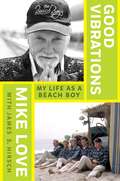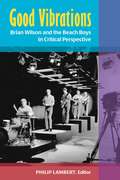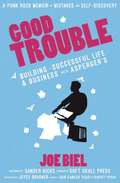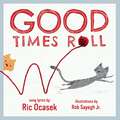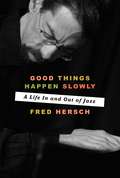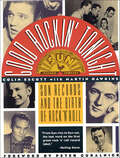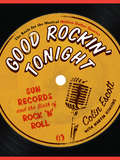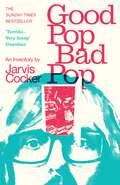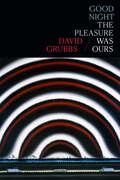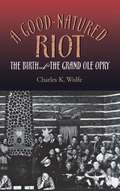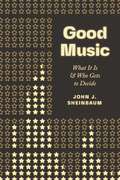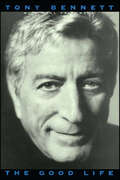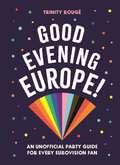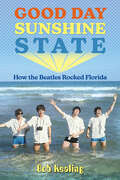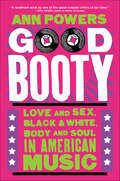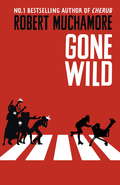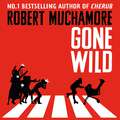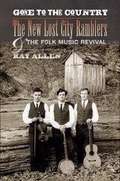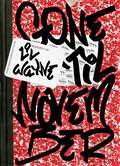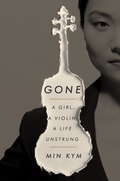- Table View
- List View
Goodbye Russia: Rachmaninoff in Exile
by Fiona MaddocksThe moving story of Rachmaninoff's years in exile and the composition of his last great work, set against a cataclysmic backdrop of two world wars and personal tragedy.In 1940, Sergei Rachmaninoff, living in exile in America, broke his creative silence and composed a swan song to his Russian homeland—his iconic &“Symphonic Dances.&” What happened in those final haunted years and how did he come to write his farewell masterpiece? Rachmaninoff left Petrograd (now St. Petersburg) in 1917 during the throes of the Russian Revolution. He was forty-four years old, at the peak of his powers as composer-conductor-performer, moving in elite Tsarist circles, as well as running the family estate, his refuge and solace. He had already written the music which, today, has made him one of the most popular composers of all time: the second and third Piano Concertos and two symphonies. The story of his years in exile in America and Switzerland has only been told in passing. Reeling from the trauma of a life in upheaval, he wrote almost no music and quickly had to reinvent himself as a fêted virtuoso pianist, building up untold wealth and meeting the stars—from Walt Disney and Charlie Chaplin to his Russian contemporaries and polar opposites, Prokofiev and Stravinsky. Yet the melancholy of leaving his homeland never lifted. Using a wide range of sources, including important newly translated texts, Fiona Maddocks&’s immensely readable book conjures impressions of this enigmatic figure, his friends and the world he encountered. It explores his life as an emigré artist and how he clung to an Old Russia which no longer existed. That forging of past and present meets in his Symphonic Dances (1940), his last composition, written on Long Island shortly before his death in Beverly Hills, surrounded by a close-knit circle of exiles. Goodbye Russia is a moving and prismatic look at Rachmaninoff and his iconic final work.
Goodbye 20th Century: A Biography of Sonic Youth
by David BrowneSonic Youth's distinctive, uncompromising sounds have provided a map for innumerable musicians who followed, from '90s groundbreakers like Nirvana and Pavement to current faves like the Strokes and the Yeah Yeah Yeahs. More than perhaps any other act, Sonic Youth has brought "fringe" art to the mainstream, helping spawn an alternative arts scene that prospers to this day: a world of punk rock, underground films and comics, experimental music, conceptual art, contemporary classical compositions, and even fashion. In Goodbye 20th Century, David Browne tells the full glorious story of "the Velvet Underground of their generation," an account based on extensive research, fresh interviews with the band and those who have worked with them (from Glenn Branca and Lydia Lunch to Sofia Coppola and Spike Jonze), and unprecedented access to unreleased recordings and documents. This is a richly detailed portrait of an iconic band and the times they helped create.
Good Vibrations: My Life as a Beach Boy
by James S. Hirsch Mike Love<P>Mike Love tells the story of his legendary, raucous, and ultimately triumphant five-decade career as the front man of The Beach Boys, the most popular American band in history -- timed to coincide with the 50th anniversary of "Good Vibrations." The eBook edition includes 85 additional photos. <P>As a founding member of The Beach Boys, Mike Love has spent an extraordinary fifty-five years, and counting, as the group's lead singer and one of its principal lyricists. The Beach Boys, from their California roots to their international fame, are a unique American story -- one of overnight success and age-defying longevity; of musical genius and reckless self-destruction; of spirituality, betrayal, and forgiveness -- and Love is the only band member to be part of it each and every step. His own story has never been fully told, of how a sheet-metal apprentice became the quintessential front man for America's most successful rock band, singing in more than 5,600 concerts in 26 countries. <P>Love describes the stories behind his lyrics for pop classics such as "Good Vibrations," "California Girls," "Surfin' USA," and "Kokomo," while providing vivid portraits of the turbulent lives of his three gifted cousins, Brian, Dennis, and Carl Wilson. His partnership with Brian has few equals in American pop music, though Mike has carved out a legacy of his own -- he co-wrote the lyrics to eleven of the twelve original Beach Boy songs that were top 10 hits while providing the lead vocals on ten of them. <P>The band's unprecedented durability also provides a glimpse into America's changing cultural mores over the past half century, while Love himself has experienced both the diabolical and the divine -- from Charles Manson's "family" threatening his life to Maharishi instilling it with peace. A husband, a father, and an avid environmentalist, Love has written a book that is as rich and layered as the Beach Boy harmonies themselves. <P><b>A New York Times Bestseller</b>
Good Vibrations: Brian Wilson and the Beach Boys in Critical Perspective
by Philip LambertGood Vibrations brings together scholars with a variety of expertise, from music to cultural studies to literature, to assess the full extent of the contributions to popular culture and popular music of one the most successful and influential pop bands of the twentieth century. The book covers the full fifty-year history of the Beach Boys' music, from essays on some of the group's best-known music--such as their hit single "Good Vibrations" --to their mythical unfinished masterpiece, Smile. Throughout, the book places special focus on the individual whose creative vision brought the whole enterprise to life, Brian Wilson, advancing our understanding of his gifts as a songwriter, arranger, and producer. The book joins a growing body of literature on the popular music of the 1960s, in general, and on Brian Wilson and the Beach Boys in particular. But Good Vibrations extends the investigation further and deeper than it has gone before, not only offering new understanding and insights into individual songs and albums, but also providing close examination of compositional techniques and reflections on the group's place in American popular culture.
Good Vibrations: A Children's Picture Book (LyricPop #0)
by Brian Wilson Mike LoveMike Love and Brian Wilson's world-famous song, gloriously illustrated by Paul Hoppe, will bring smiles to the faces of children and parents alike. I'm pickin' up good vibrations She's giving me the excitations (oom bop bop)
Good Trouble: Building a Successful Life and Business with Asperger's (Punx Ser.)
by Sander Hicks Joe Biel Joyce Brabner<p>In 1996, everything about Joe Biel's life seemed like a mistake. He was 18, he lived in Cleveland, he got drunk every day, and he had mystery health problems and weird social tics. <p>All his friends' lives were as bad or worse. To escape a nihilistic, apocalyptic worldview and to bring reading and documentation into a communal punk scene, he started assembling zines and bringing them in milk crates to underground punk shows. Eventually this became Microcosm Publishing. But Biel's head for math was stronger than his ability to relate to people, and it wasn't until he was diagnosed with Asperger's Syndrome that it all began to fall into place. <p>This is the story of how, over 20 years, one person turned a litany of continuing mistakes and seeming wrong turns into a happy, fulfilled life and a thriving publishing business that defies all odds.</p>
Good Times Roll: A Children's Picture Book (LyricPop #0)
by Ric OcasekRic Ocasek's rock and roll classic, "Good Times Roll"—one of the Cars' hit songs—leaps off the page in this exhilarating picture book. "Let the good times roll Let them knock you around Let the good times ro
Good Things Happen Slowly: A Life In and Out of Jazz
by Fred HerschJazz could not contain Fred Hersch. Hersch’s prodigious talent as a sideman—a pianist who played with the giants of the twentieth century in the autumn of their careers, including Art Farmer and Joe Henderson—blossomed further in the eighties and beyond into a compositional genius that defied the boundaries of bop, sweeping in elements of pop, classical, and folk to create a wholly new music. <p><p> Good Things Happen Slowly is his memoir. It’s the story of the first openly gay, HIV-positive jazz player; a deep look into the cloistered jazz culture that made such a status both transgressive and groundbreaking; and a profound exploration of how Hersch’s two-month-long coma in 2007 led to his creating some of the finest, most direct, and most emotionally compelling music of his career. <p> Remarkable, and at times lyrical, Good Things Happen Slowly is an evocation of the twilight of Post-Stonewall New York, and a powerfully brave narrative of illness, recovery, music, creativity, and the glorious reward of finally becoming oneself.
Good Rockin' Tonight: Sun Records and the Birth of Rock 'N' Roll
by Colin Escott Martin HawkinsMemphis, Tennessee. The early 1950s. The Mississippi rolls by, and there's a train in the night. Down on Beale Street there's hard-edged blues, on the outskirts of town they're pickin' hillbilly boogie.At Sam Phillips' Sun Records studio on Union Avenue, there's something different going on. "Shake it, baby, shake it!" "Go, cat, go!" "We're gonna rock..."This is where rock 'n' roll was born-the record company that launched Elvis Presley, Jerry Lee Lewis, Johnny Cash, Roy Orbison, and Carl Perkins. The label that brought the world, "Blue Suede Shoes," "Whole Lotta Shakin' Goin' On," "Breathless," "I Walk the Line," "Mystery Train," "Baby, Let's Play House,' "Good Rockin' Tonight." Good Rockin Tonight is the history, in words and over 240 photographs, of Sam Phillips' legendary storefront studio, from the early days with primal blues artists like Howlin' Wolf and B.B. King to the long nights in the studio with Elvis and Jerry Lee. As colorful and energetic as the music itself, it's a one-of-a-kind book for anyone who wants to know where it all started.
Good Rockin' Tonight
by Colin Escott Martin HawkinsRock 'n' roll was born in Memphis in the tiny storefront recording studio of Sun Records. <P><P>This is the definitive account of how it happened! Sam Phillips's credo was: "If you're not doing something different, you're not doing anything." <P> If he had done no more than discover Elvis Presley and produce his first five singles he would still be the godfather of rock 'n' roll. But he did more. <P>Much more. While Elvis was still sitting on the edge of his bed listening to the radio and figuring out guitar chords, Phillips was discovering and recording blues giants like B.B. King, Howling Wolf, and Ike Turner. <P>During the few months that Elvis was with Sun Records, Phillips found Johnny Cash and Carl Perkins. Soon after, he found Jerry Lee Lewis, Roy Orbison, and Charlie Rich. <P>And he did it almost singlehandedly--from his two-room studio in Memphis, Tennessee. <P> Phillips's story, which Colin Escott tells in beautiful detail, is more than a catalog of hits. <P>Without Sun's philosophy of experimentation, innovation, and genre transcendence, the musical revolution could have never begun.
Good Pop, Bad Pop: The Sunday Times bestselling hit from Jarvis Cocker
by Jarvis CockerThe Sunday Times bestselling hit memoir from Pulp frontman Jarvis Cocker.'It's real gold... its storytelling first class' Sunday TimesWhat if the things we keep hidden say more about us than those we put on display?We all have a random collection of the things that made us - photos, tickets, clothes, souvenirs, stuffed in a box, packed in a suitcase, crammed into a drawer. When Jarvis Cocker starts clearing out his loft, he finds a jumble of objects that catalogue his story and ask him some awkward questions:Who do you think you are?Are clothes important?Why are there so many pairs of broken glasses up here?From a Gold Star polycotton shirt to a pack of Wrigley's Extra, from his teenage attempts to write songs to the Sexy Laughs Fantastic Dirty Joke Book, this is the hard evidence of Jarvis's unique life, Pulp, 20th century pop culture, the good times and the mistakes he'd rather forget.This is not a life story. It's a loft story.'Nostalgic, playful and beautifully designed' Daily Mail'Brilliant...lurid, entertaining' Daily Telegraph'Terrific... Very funny' Guardian* A Book of the Year in the Daily Telegraph, Financial Times, Daily Mail and Uncut *
Good night the pleasure was ours
by David GrubbsWith Good night the pleasure was ours, David Grubbs melts down and recasts three decades of playing music on tour into a book-length poem, bringing to a close the trilogy that includes Now that the audience is assembled and The Voice in the Headphones. In Good night the pleasure was ours, the world outside the tour filters in with eccentric sparseness. From teenage punk bands to ensembles without fixed membership, and from solo performance to a group augmented by digital avatars, Grubbs presents touring as a series of daily dislocations that provides an education distinctly its own. These musicians’ job is to play that evening’s gig—whether to enthusiastic, hostile, or apathetic audiences—and then to do it again the next day. And yet, over the course of the book’s multidecade arc, Grubbs depicts music making as an irreversible process—one reason for loving it so.
A Good-Natured Riot: The Birth of the Grand Ole Opry (Co-published with the Country Music Foundation Press)
by Charles K. WolfeWinner of the Ralph J. Gleason Music Book AwardWinner of the ASCAP Deems Taylor AwardOn November 28, 1925, a white-bearded man sat before one of Nashville radio station WSM's newfangled carbon microphones to play a few old-time fiddle tunes. Uncle Jimmy Thompson played on the air for an hour that night, and throughout the region listeners at their old crystal sets suddenly perked up. Back in Nashville the response at the offices of National Life Insurance Company, which owned radio station WSM ("We Shield Millions"), was dramatic; phone calls and telegrams poured into the station, many of them making special requests. It was not long before station manager George D. Hay was besieged by pickers and fiddlers of every variety, as well as hoedown bands, singers, and comedians—all wanting their shot at the Saturday night airwaves. "We soon had a good-natured riot on our hands," Hay later recalled. And, thus, the Opry was born.Or so the story goes. In truth, the birth of the Opry was a far more complicated event than even Hay, "the solemn old Judge," remembered. The veteran performers of that era are all gone now, but since the 1970s pioneering country music historian Charles K. Wolfe has spent countless hours recording the oral history of the principals and their families and mining archival materials from the Country Music Foundation and elsewhere to understand just what those early days were like. The story that he has reconstructed is fascinating. Both a detailed history and a group biography of the Opry's early years, A Good-Natured Riot provides the first comprehensive and thoroughly researched account of the personalities, the music, and the social and cultural conditions that were such fertile ground for the growth of a radio show that was to become an essential part of American culture.Wolfe traces the unsure beginnings of the Opry through its many incarnations, through cast tours of the South, the Great Depression, commercial sponsorship by companies like Prince Albert Tobacco, and the first national radio linkups. He gives colorful and engaging portraits of the motley assembly of the first Opry casts—amateurs from the hills and valleys surrounding Nashville, like harmonica player Dr. Humphrey Bate ("Dean of the Opry") and fiddler Sid Harkreader, virtuoso string bands like the Dixieliners, colorful hoedown bands like the Gully Jumpers and the Fruit Jar Drinkers, the important African American performer DeFord Bailey, vaudeville acts and comedians like Lasses and Honey, through more professional groups such as the Vagabonds, the Delmore Brothers, Bill Monroe and the Blue Grass Boys, and perennial favorite Roy Acuff and his Smoky Mountain Boys.With dozens of wonderful photographs and a complete roster of every performer and performance of these early Opry years, A Good-Natured Riot gives a full and authoritative portrayal of the colorful beginnings of WSM's barn dance program up to 1940, by which time the Grand Ole Opry had found its national audience and was poised to become the legendary institution that it remains to this day.
A Good-Natured Riot: The Birth of the Grand Ole Opry (Co-published with the Country Music Foundation Press)
by Charles K. WolfeWinner of the Ralph J. Gleason Music Book AwardWinner of the ASCAP Deems Taylor Award On November 28, 1925, a white-bearded man sat before one of Nashville radio station WSM's newfangled carbon microphones to play a few old-time fiddle tunes. Uncle Jimmy Thompson played on the air for an hour that night, and throughout the region listeners at their old crystal sets suddenly perked up. Back in Nashville the response at the offices of National Life Insurance Company, which owned radio station WSM ("We Shield Millions"), was dramatic; phone calls and telegrams poured into the station, many of them making special requests. It was not long before station manager George D. Hay was besieged by pickers and fiddlers of every variety, as well as hoedown bands, singers, and comedians--all wanting their shot at the Saturday night airwaves. "We soon had a good-natured riot on our hands," Hay later recalled. And, thus, the Opry was born. Or so the story goes. In truth, the birth of the Opry was a far more complicated event than even Hay, "the solemn old Judge," remembered. The veteran performers of that era are all gone now, but since the 1970s pioneering country music historian Charles K. Wolfe has spent countless hours recording the oral history of the principals and their families and mining archival materials from the Country Music Foundation and elsewhere to understand just what those early days were like. The story that he has reconstructed is fascinating. Both a detailed history and a group biography of the Opry's early years, A Good-Natured Riot provides the first comprehensive and thoroughly researched account of the personalities, the music, and the social and cultural conditions that were such fertile ground for the growth of a radio show that was to become an essential part of American culture. Wolfe traces the unsure beginnings of the Opry through its many incarnations, through cast tours of the South, the Great Depression, commercial sponsorship by companies like Prince Albert Tobacco, and the first national radio linkups. He gives colorful and engaging portraits of the motley assembly of the first Opry casts--amateurs from the hills and valleys surrounding Nashville, like harmonica player Dr. Humphrey Bate ("Dean of the Opry") and fiddler Sid Harkreader, virtuoso string bands like the Dixieliners, colorful hoedown bands like the Gully Jumpers and the Fruit Jar Drinkers, the important African American performer DeFord Bailey, vaudeville acts and comedians like Lasses and Honey, through more professional groups such as the Vagabonds, the Delmore Brothers, Bill Monroe and the Blue Grass Boys, and perennial favorite Roy Acuff and his Smoky Mountain Boys. With dozens of wonderful photographs and a complete roster of every performer and performance of these early Opry years, A Good-Natured Riot gives a full and authoritative portrayal of the colorful beginnings of WSM's barn dance program up to 1940, by which time the Grand Ole Opry had found its national audience and was poised to become the legendary institution that it remains to this day.
Good Music: What It Is and Who Gets to Decide
by John J. SheinbaumOver the past two centuries Western culture has largely valorized a particular kind of “good” music—highly serious, wondrously deep, stylistically authentic, heroically created, and strikingly original—and, at the same time, has marginalized music that does not live up to those ideals. In Good Music, John J. Sheinbaum explores these traditional models for valuing music. By engaging examples such as Handel oratorios, Beethoven and Mahler symphonies, jazz improvisations, Bruce Springsteen, and prog rock, he argues that metaphors of perfection do justice to neither the perceived strengths nor the assumed weaknesses of the music in question. Instead, he proposes an alternative model of appreciation where abstract notions of virtue need not dictate our understanding. Good music can, with pride, be playful rather than serious, diverse rather than unified, engaging to both body and mind, in dialogue with manifold styles and genres, and collaborative to the core. We can widen the scope of what music we value and reconsider the conventional rituals surrounding it, while retaining the joys of making music, listening closely, and caring passionately.
The Good Life: The Autobiography Of Tony Bennett
by Tony Bennett Will FriedwaldA wonderfully warm, resonant, and captivating autobiography from iconic singer and entertainer Tony Bennett.He&’s that regular guy from Astoria, Queens, who left his heart in San Francisco. He&’s the postwar heartthrob who inspired hundreds of young girls to wear black outside St. Patrick&’s Cathedral on his wedding day. He&’s the darling of the MTV generation who made music history when, at the age of 68, he won the coveted Grammy Award for Album of the Year. He&’s the consummate artist known worldwide for his paintings. He&’s Tony Bennett, and here, this legend shares his amazing life story. &“Tony Bennett has not just bridged the generation gap, he has demolished it,&” praised The New York Times. From his appearance with the Red Hot Chili Peppers at the 1993 MTV Video Awards to his Radio City Music Hall concert with Lady Gaga, Bennett was the hottest—and coolest—pop-culture icon for today&’s younger listeners, while remaining beloved by their parents and grandparents. Multiple generations have experienced the Tony Bennett magic—the mesmerizing spell of a singer in love with singing, who embraces his audience with a soulful serenity communicated by both the man and his music. Honored with countless awards and with more than ninety albums to his credit, no other recording artist has attained Bennett&’s stature—or garnered the half-century of memories shared in The Good Life. From Sinatra, Judy Garland and Ella Fitzgerald, to k.d. lang and Elvis Costello, Bennett shares his unique takes on the most fascinating talents of our time. Here is the story of his lifelong love affair with art, music, and performing—from his childhood in Depression-era Queens, where opera and Billie Holiday flowed freely; to his stint as a singing waiter; to soaking up the New York jazz scene in the 1940s. With crisp wit and firmly grounded emotion, Bennett captures the people and places that shaped his sublime performances. The dozens of hits he introduced to the great American songbook, including &“Because of You,&” &“Rags to Riches,&” &“Cold, Cold Heart,&” and his signature song, &“I Left My Heart in San Francisco,&” remain a legacy of truth and beauty for the classic art of intimate singing. In this unforgettable self-portrait, we get to know Tony Bennett as he really is: an unpretentious and thoughtful human being. Through all of his personal and artistic challenges, he was, in his own words, &“a humanist&” whose Zen-like philosophy of life remains an inspiration for all ages. Like the fascinating story he shares in The Good Life, Tony Bennett was one of a kind, an American treasure, an enduring artist seasoned with experience and self-knowledge, and a true class act.
Good Evening Europe!: An unofficial party guide for every Eurovision fan
by Pyramid Trinity RougéFrom the good, the bad and the downright extraordinary, the Eurovision Song Contest is more than just one night of the year, it's a celebration of all things fabulous. This handy little guide is jam-packed with a myriad of Eurovision ideas to help you get your party started and guarantee yourself a great celebration that's as weird and wonderful as the acts themselves.So, get ready for questionable outfits, hilarious sassy commentary and lots of feathers.This isn't the time to be formal or trendy - focus on flamboyance and tackiness in large doses. Lay on the cheese as thickly as you can, and you won't go far wrong!
Good Evening Europe!: An unofficial party guide for every Eurovision fan
by Pyramid Trinity RougéFrom the good, the bad and the downright extraordinary, the Eurovision Song Contest is more than just one night of the year, it's a celebration of all things fabulous. This handy little guide is jam-packed with a myriad of Eurovision ideas to help you get your party started and guarantee yourself a great celebration that's as weird and wonderful as the acts themselves.So, get ready for questionable outfits, hilarious sassy commentary and lots of feathers.This isn't the time to be formal or trendy - focus on flamboyance and tackiness in large doses. Lay on the cheese as thickly as you can, and you won't go far wrong!
Good Day Sunshine State: How the Beatles Rocked Florida
by Bob KealingThe musical and cultural impact of the Fab Four in Florida In 1964, Beatlemania flooded the United States. The Beatles appeared live on the Ed Sullivan Show and embarked on their first tour of North America—and they spent more time in Florida than anywhere else. Good Day Sunshine State dives into this momentous time and place, exploring the band’s seismic influence on the people and culture of the state. Bob Kealing sets the historical stage for the band’s arrival—a nation dazed after the assassination of John F. Kennedy and on the precipice of the Vietnam War; a heavily segregated, conservative South; and in Florida, recent events that included the Cuban Missile Crisis and the arrest and imprisonment of Martin Luther King Jr. in St. Augustine. Kealing documents the culture clashes and unexpected affinities that emerged as the British rockers drew crowds, grew from fluff story to the subject of continual news coverage, and basked in the devotion of a young and idealistic generation. Through an abundance of letters, memorabilia, and interviews with journalists, fellow musicians, and fans, Kealing takes readers behind the scenes into the Beatles’ time in locations such as Miami Beach, where they wrote new songs and met Muhammad Ali. In the tropical environs of Key West, John Lennon and Paul McCartney experienced milestone moments in their friendship. And the band dodged the path of Hurricane Dora to play at the Gator Bowl in Jacksonville, where they famously refused to perform until the city agreed to integrate the audience. Kealing highlights the hopeful futures that the Beatles helped inspire, including stories of iconic rock-and-rollers such as Tom Petty who followed the band’s lead in their own paths to stardom. This book offers a close look at an important part of the musical and cultural revolution that helped make the Fab Four a worldwide phenomenon.Funding for this publication was provided through a grant from Florida Humanities with funds from the National Endowment for the Humanities. Any views, findings, conclusions or recommendations expressed in this publication do not necessarily represent those of Florida Humanities or the National Endowment for the Humanities.
Good Booty: Love and Sex, Black & White, Body and Soul in American Music
by Ann PowersNPR Best Books of 2017In this sweeping history of popular music in the United States, NPR’s acclaimed music critic examines how popular music shapes fundamental American ideas and beliefs, allowing us to communicate difficult emotions and truths about our most fraught social issues, most notably sex and race.In Good Booty, Ann Powers explores how popular music became America’s primary erotic art form. Powers takes us from nineteenth-century New Orleans through dance-crazed Jazz Age New York to the teen scream years of mid-twentieth century rock-and-roll to the cutting-edge adventures of today’s web-based pop stars. Drawing on her deep knowledge and insights on gender and sexuality, Powers recounts stories of forbidden lovers, wild shimmy-shakers, orgasmic gospel singers, countercultural perverts, soft-rock sensitivos, punk Puritans, and the cyborg known as Britney Spears to illuminate how eroticism—not merely sex, but love, bodily freedom, and liberating joy—became entwined within the rhythms and melodies of American song. This cohesion, she reveals, touches the heart of America's anxieties and hopes about race, feminism, marriage, youth, and freedom. In a survey that spans more than a century of music, Powers both heralds little known artists such as Florence Mills, a contemporary of Josephine Baker, and gospel queen Dorothy Love Coates, and sheds new light on artists we think we know well, from the Beatles and Jim Morrison to Madonna and Beyoncé. In telling the history of how American popular music and sexuality intersect—a magnum opus over two decades in the making—Powers offers new insights into our nation psyche and our soul.
Gone Wild: Book 3 (Rock War #3)
by Robert MuchamoreThe Rock War TV show is the most-watched reality show on British telly, and it's only halfway through. Jay, Summer, Dylan and their bands have all made it past the tough boot camp stage, and now the last six will fight it out until the season's finale, live on Christmas Eve.But it's not all about the music. Summer was hit by a motorbike at the end of boot camp. Jay's brother Theo can't keep out of trouble - or out of handcuffs. And Dylan, the outsider, is investigating corruption within the workings of the competition itself.They've got everything to play for ...The dramatic third book in this spectacular series from Robert Muchamore, bestselling author of CHERUB.
Gone Wild: Book 3 (Rock War #3)
by Robert MuchamoreThe Rock War TV show is the most-watched reality show on British telly, and it's only halfway through. Jay, Summer, Dylan and their bands have all made it past the tough boot camp stage, and now the last six will fight it out until the season's finale, live on Christmas Eve.But it's not all about the music. Summer was hit by a motorbike at the end of boot camp. Jay's brother Theo can't keep out of trouble - or out of handcuffs. And Dylan, the outsider, is investigating corruption within the workings of the competition itself.They've got everything to play for ...The dramatic third book in the explosive new series from Robert Muchamore, author of CHERUB.(P) Hodder Children's Books 2016
Gone to the Country: The New Lost City Ramblers and the Folk Music Revival (Music in American Life)
by Ray AllenGone to the Country chronicles the life and music of the New Lost City Ramblers, a trio of city-bred musicians who helped pioneer the resurgence of southern roots music during the folk revival of the late 1950s and 1960s. Formed in 1958 by Mike Seeger, John Cohen, and Tom Paley, the Ramblers introduced the regional styles of southern ballads, blues, string bands, and bluegrass to northerners yearning for a sound and an experience not found in mainstream music. Ray Allen interweaves biography, history, and music criticism to follow the band from its New York roots to their involvement with the commercial folk music boom. Allen details their struggle to establish themselves amid critical debates about traditionalism brought on by their brand of folk revivalism. He explores how the Ramblers ascribed notions of cultural authenticity to certain musical practices and performers and how the trio served as a link between southern folk music and northern urban audiences who had little previous exposure to rural roots styles. Highlighting the role of tradition in the social upheaval of mid-century America, Gone to the Country draws on extensive interviews and personal correspondence with band members and digs deep into the Ramblers' rich trove of recordings.
Gone 'Til November: A Journal of Rikers Island
by Lil Wayne&“Transfixing…[Wayne&’s] prison diary is, above all, a testament to the irrepressibility of his charisma—his is a force that can never go dormant, even when it&’s not plainly on display.&” –The New YorkerFrom rap superstar Lil Wayne comes Gone &’Til November, a deeply personal and revealing account of his time spent incarcerated on Rikers Island for eight months in 2010.In 2010, recording artist Lil Wayne was at the height of his career. A fixture in the rap game for more than a decade, Lil Wayne (aka Weezy) had established himself as both a prolific musician and a savvy businessman, smashing long-held industry records, winning multiple Grammy Awards, and signing up-and-coming talent like Drake and Nicki Minaj to his Young Money label. All of this momentum came to a halt when he was convicted of possession of a firearm and sentenced to a yearlong stay at Rikers Island. Suddenly, the artist at the top of his game was now an inmate at the mercy of the American penal system. At long last, Gone &’Til November reveals the true story of what really happened while Wayne was behind bars, exploring everything from his daily rituals to his interactions with other inmates to how he was able to keep himself motivated and grateful. Taken directly from Wayne&’s own journal, this intimate, personal account of his incarceration is an utterly humane look at the man behind the artist.
Gone: A Girl, a Violin, a Life Unstrung
by Min KymThe spellbinding memoir of a violin virtuoso who loses the instrument that had defined her both on stage and off -- and who discovers, beyond the violin, the music of her own voice Her first violin was tiny, harsh, factory-made; her first piece was “Twinkle Twinkle, Little Star.” But from the very beginning, Min Kym knew that music was the element in which she could swim and dive and soar. At seven years old, she was a prodigy, the youngest ever student at the famed Purcell School. At eleven, she won her first international prize; at eighteen, violinist great Ruggiero Ricci called her “the most talented violinist I’ve ever taught.” And at twenty-one, she found “the one,” the violin she would play as a soloist: a rare 1696 Stradivarius. Her career took off. She recorded the Brahms concerto and a world tour was planned.Then, in a London café, her violin was stolen. She felt as though she had lost her soulmate, and with it her sense of who she was. Overnight she became unable to play or function, stunned into silence.In this lucid and transfixing memoir, Kym reckons with the space left by her violin’s absence. She sees with new eyes her past as a child prodigy, with its isolation and crushing expectations; her combustible relationships with teachers and with a domineering boyfriend; and her navigation of two very different worlds, her traditional Korean family and her music. And in the stark yet clarifying light of her loss, she rediscovers her voice and herself.


